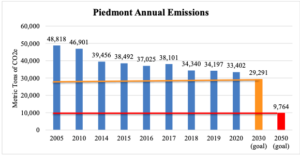Open Letter to Piedmont Planning Director Kevin Jackson
Dear Planning Director Jackson,
I attended the November 30 community workshop about the proposed Moraga Canyon housing project. You and I spoke about several issues, and you welcomed me to send you follow-up observations. I am concerned about the project’s isolation, the low-income residents’ separation, and the willingness of the project’s managers to incorporate community feedback into the plans.
The first part of the community meeting was a presentation by City staff and the project planning consultants to describe the project and its four options. Then, the assembled people were invited to speak one-on-one to various project team members at poster-board stations along the perimeter of the room. No opportunity was given for workshop attendees to question the project planners as a group. General questions about the overall nature of the project would not be answered by staff personnel who were designated to discuss specific options at individual poster-board stations. This gave me and several other people the feeling that the City isn’t really interested in hearing and addressing our concerns.
I am concerned about the isolation of the 132 new units planned for the Moraga area. There is no “urban fabric” connecting that location with the rest of Piedmont, except for the heavily-trafficked Moraga Ave. Walkers or bike riders would not see other Piedmont houses for over a quarter mile. Isolation may be a more severe problem for residents of the 60 subsidized units who may not have cars available for both going to work and for shopping or going to school. This problem could be mitigated if the City were to operate a shuttle bus, similar to the shuttles that Emeryville operates to and from the MacArthur BART station. A Piedmont shuttle could take residents down Moraga, along Piedmont Ave., across MacArthur to Grand Ave., up Grand to Oakland Ave., up Oakland to the City Center, and then along Highland back to Moraga. Connection to the BART station might even be included in the route. The City could operate the shuttle for the first five years, and then evaluate whether the amount of ridership justifies continuing, perhaps with support from passenger fees. This solution was mentioned when we spoke at the meeting, Mr. Jackson, so I am reminding you now and requesting that it be given serious consideration.
A more serious problem is the planned separation of the below-market units from the market-rate units. This is a terrible idea that will have dangerous consequences. It would create a low-income “ghetto” in the midst of high-income housing. Low-income residents would be stigmatized whenever there was a problem like graffiti, or trash, or theft. The higher-income residents would instinctively blame any grime or crime on “those people” living in the separate, nearby buildings. Numerous studies have shown that when lower-income people are physically integrated into a higher-income housing project discrimination is minimized. Indeed, the lower-income residents become better integrated into the community, and their own economic circumstances improve faster than those living in separated housing.
While you agreed that integration was a good idea, Mr. Jackson, you contended that separation was necessary because the subsidized housing had to be built as a separate project. This was not my experience when I developed housing for low and moderate income people, financed by both Federal and State programs, a few decades ago. Section 8’s below-market rental housing units were part of a larger market-rate project financed through HUD (the U.S. Department of Housing and Urban Development). There was no physical difference between the rental units. A local non-profit corporation bought the project from a for-profit developer who gained the tax-shelter benefits from selling designated subsidized units at below-market rates.
In Piedmont’s project, some of the 132 units could be sold to individuals (72 at market rate, 60 at below-market rate), with unsold units being sold to a non-profit agency which would rent the market-rate units and the subsidized units together, with no physical distinction among the units. They would be seamlessly included within the 132-unit project. No ghetto. No separation. There are many different ways to finance such mixed-income projects – direct subsidies, tax credits, a combination of county, State and Federal funding, perhaps even some philanthropy.
We discussed this possibility at the community meeting and you asserted that an integrated project was not feasible; there would have to be two separate projects. I implore you to go back and investigate State and Federal subsidy programs more thoroughly. Creating a new housing community that separates residents by their economic status creates a danger that will cost our City financially and socially in the decades to come.
I hope you, the planning consultants, and the City Council act on these concerns productively, and demonstrate that you do respond to community residents’ feedback.
Sincerely,
Bruce Joffe, Piedmont Resident



